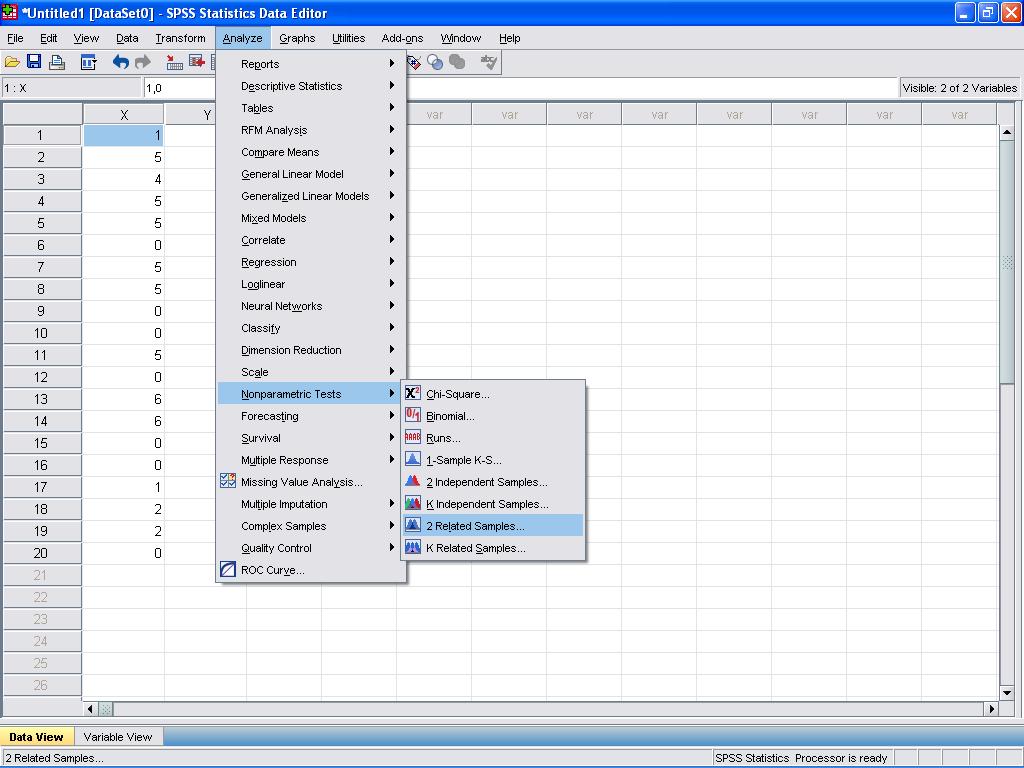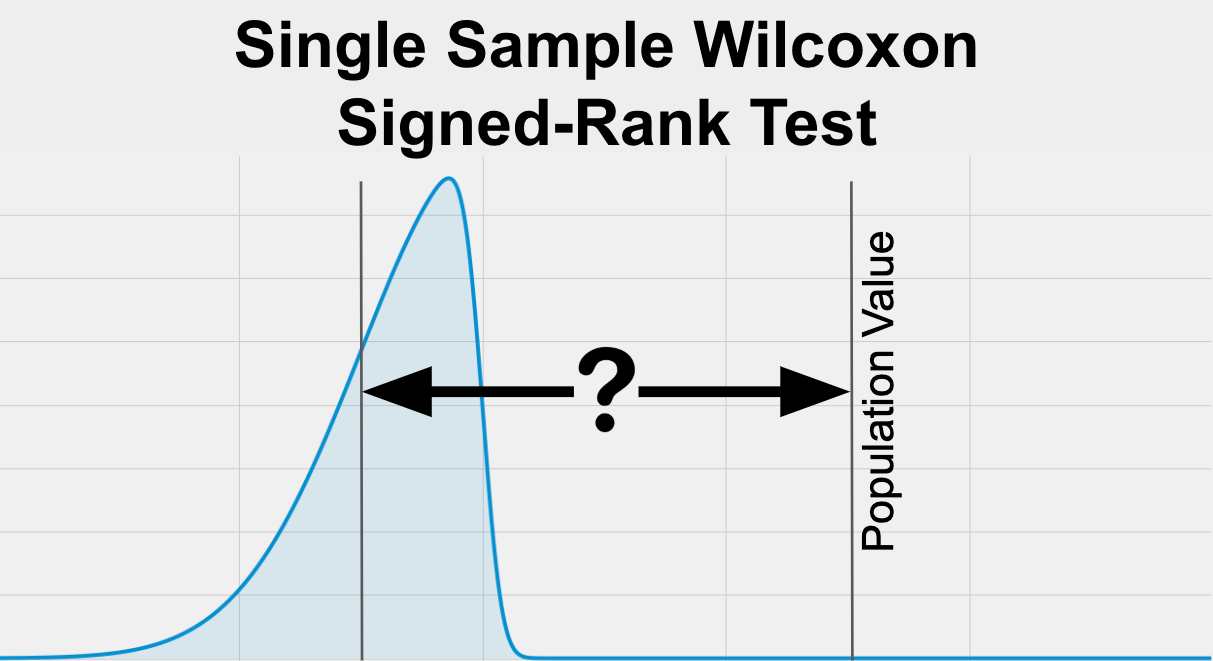
Wilcoxon Test Spss Interpretieren
The Wilcoxon Signed Rank Test is the non-parametric version of the paired samples t-test. It is used to test whether or not there is a significant difference between two population means when the distribution of the differences between the two samples cannot be assumed to be normal.

Wilcoxon signed rank test using SPSS YouTube
The Wilcoxon Signed-Rank Test is a statistical test used to determine if 2 measurements from a single group are significantly different from each other on your variable of interest. Your variable of interest should be continuous and your group randomly sampled to meet the assumptions of this test. The Wilcoxon Signed-Rank Test is also called.

How to Run the Wilcoxon Signed Rank Test in SPSS
13.4: Wilcoxon Signed-Rank Test. The Wilcoxon Signed-Rank Sum test is the non-parametric alternative to the dependent t-test. The Wilcoxon Signed-Rank Sum test compares the medians of two dependent distributions. The Signed-Rank Sum test, developed by Frank Wilcoxon, finds the difference between paired data values and ranks the absolute value.

The Wilcoxon Sign Test in SPSS Statistics Solutions
Conducting the Wilcoxon signed rank test in SPSS (new method) There are two methods for carrying out a Wilcoxon test in SPSS, the legacy dialogs method and the 'New' procedure that we will use here. Go to Analyze Nonparametric Related samples and move the two variables of interest, TotalDEMO and then TotalCold, to the 'Test Fields.

SPSS Wilcoxon signed rank test (via Related samples) YouTube
Wilcoxon signed-rank test, a rank test used in nonparametric statistics can be considered as a backup for t-test where the independent variable is binary but the dependent variable is not normally distributed. ( Source)

How to Perform a Wilcoxon Signed Rank Test in SPSS Statology
Wilcoxon Signed-Ranks Test - How It Basically Works For each case calculate the difference between score_1 and score_2. Ties (cases whose two values are equal) are excluded from this test altogether. Calculate the absolute difference for each case. Rank the absolute differences over cases.

SPSS One sample Wilcoxon Signed Rank Test YouTube
Instructional video on how to perform a one-sample Wilcoxon signed rank test with SPSS. Note this focusses on performing the test, not on interpreting the ou.

Wilcoxon signedrank test in SPSS YouTube
The Wilcoxon sign test is a statistical comparison of average of two dependent samples. The Wilcoxon sign test works with metric (interval or ratio) data that is not multivariate normal, or with ranked/ordinal data. Generally it the non-parametric alternative to the dependent samples t-test. The Wilcoxon sign test tests the null hypothesis that.

Madlyaek Wilcoxon Signed Rank Test using SPSS
What is the Wilcoxon Signed Rank Test? The Wilcoxon signed rank test is a nonparametric hypothesis test that can do the following: Evaluate the median difference between two paired samples. Compare a 1- sample median to a reference value. In other words, it is the nonparametric alternative for both the 1-sample t-test and paired t-test.

SPSS Wilcoxon signed rank test (via Legacy dialogs) YouTube
The Wilcoxon Sign Test in SPSS. The Wilcoxon sign test is a statistical comparison of average of two dependent samples. The Wilcoxon sign test works with metric (interval or ratio) data that is not multivariate normal, or with ranked/ordinal data. Generally it the non-parametric alternative to the dependent samples t-test. The Wilcoxon sign test tests the null hypothesis that the average.

Wilcoxon signed rank test on SPSS with write up (APA style) YouTube
The Wilcoxon matched-pairs signed rank test computes the difference between each set of matched pairs, then follows the same procedure as the signed rank test to compare the sample against some median. The term "Wilcoxon" is often used for either test. This usually isn't confusing, as it should be obvious if the data is matched, or not matched.

How to Perform a Wilcoxon Signed Rank Test in SPSS Statology
Wilcoxon Signed Rank Test - Introduction to SPSS - ULibraries Research Guides at University of Utah Introduction to SPSS example dataset SPSS Assumptions: 1. The dependent variable is continuous or ordinal data. 2. The independent variable is related and matched pairs. 3.

Single Sample Wilcoxon SignedRank Test
The Wilcoxon Signed Rank Test is the non-parametric version of the paired t-test. It is used to test whether or not there is a significant difference between two population means. When to Use the Wilcoxon Signed Rank Test

How to Perform a Wilcoxon Signed Rank Test in SPSS Statology
The Wilcoxon Signed Rank Test is the non-parametric version of the paired samples t-test. It is used to test whether or not there is a significant difference between two population means when the distribution of the differences between the two samples cannot be assumed to be normal.

How to Perform the Wilcoxon Signed Rank Test Statology
The Wilcoxon signed-rank test procedure compares the distributions of paired variable sets. The procedure considers information about both the sign of the differences and the magnitude of the differences between pairs. Example In general, do families receive the asking price when they sell their homes?

How to do Wilcoxon SignedRank Test and Sign Test in SPSS? iLearn Statistics YouTube
Introduction The Wilcoxon signed-rank test is the nonparametric test equivalent to the dependent t-test. As the Wilcoxon signed-rank test does not assume normality in the data, it can be used when this assumption has been violated and the use of the dependent t-test is inappropriate.